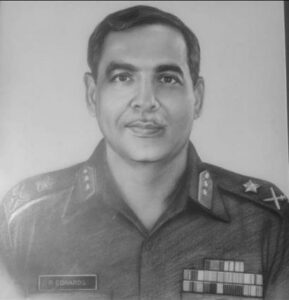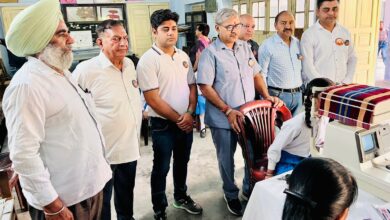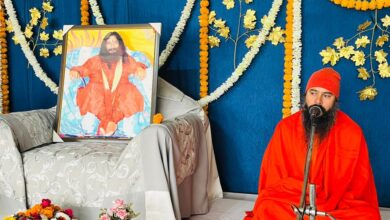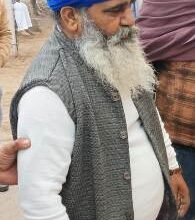MORAL FIBRE OF THE ‘YOUTH BULGE’ – ‘Yehi Samay Hai, Sahi Samay Hai’

MORAL FIBRE OF THE ‘YOUTH BULGE’ – ‘Yehi Samay Hai, Sahi Samay Hai’
Major General Rajiv Edwards, VSM (Retd)
The most authoritative demographic dataset, namely the World Population Prospects Report puts India’s existing population at the first position among 195 countries worldwide, at a mammoth 1.45 billion. The country is said to be in the second stage of Bloom and Canning’s ‘demographic dividend’, which is marked by a decrease in birth rate, a gradual increase in the number of old people and a dramatic increase in the workforce. Consequently, today about 68% of the population in India falls in the ‘working age’ group of 15-64, making it one of the youngest countries globally.
India entered the demographic dividend opportunitywindow in 2005-06 and is expected to remain there till 2055-56. By happenstance, this increase coincides with the period of the Amrit Kaal or Kartavya Kaal, the final 25 years to the coveted milestone of ‘100’ in 2047, when India is touted to transform into a developed nation. A lot of planning and preparation has been done for this ultimate goal, embellished with catchy slogans like ‘Panch Pran’, ‘Char Sthambh’, ‘Saptarishi’ and so on. All these initiatives are intended to propel India through the Kartavya Kaal to Viksit Bharat@2047.
The French philosopher and father of sociology, Auguste Comte stated that ‘demography is destiny’. Be that as it may, the trump card of India is its human resource or the ‘youth bulge’. But, the sheer number of young people in itself is unlikely to be the game changer ….. it is the quality and more importantly the moral fibre of this talent that will determine their actual impact. It is well known that, ‘ethics and morality are the nectar and essence of human behaviour’. So, while the youth resource is India’s greatest opportunity, it is its greatest challenge as well!
The ‘working age’ of the dividend encompasses the stage from adolescence to late middle age. However, it is the youth segment of the dividend i.e. adolescence (10-19) and young adulthood period (20-25) that is perhaps the most receptive and impressionable stage. The learning and experience of this ‘youthful’ phase of life is likely to leave an enduring impact and guide future behaviour and attitudes. Today, every fifth person in India is an adolescent and every third, a young adult. Hence, investing in this segment is the best way to leverage the country’s competitive advantage @ its demographic dividend.
PM Modi has stated that, ‘our nation is filled with tremendous energy of the youth. Whatever future we desire of, we must keep the youth at the centre. If we do this, we can surge ahead at an unmatchable pace’. That is indeed a truism, provided, literally speaking, youth are not enthused to drift ‘off centre’! Ostensibly, in our endeavours to educate and empower the youth, we seem to be skimping on the essentials. The fact as Aristotle pointed out is that, ‘educating the mind without educating the heart is no education at all’, for it can lead to superficiality and moral pluralism. Therefore, the crux of the core is building character in the youth…..the truth beyond the flesh! A country is as good as its citizens…their ethos, values and character is reflected in the country’s make up and determine its progress or stagnation. Moreover, moral fibre is not only important to develop skills, values and behaviours needed to navigate life successfully, but also to contribute positively to society. Today, many fault lines, at every level of functioning in the country, may be attributed to a paucity of strength of character.
It is a scientific actuality that human persona is shaped not so much by genetics, but by the environment in which one subsists…..the ‘nature versus nurture’ debate. Character is contextual. Our genes provide the foundation for certain character traits, however, it is our experiences and interactions within our environment that determine how these traits are expressed and developed. Parental upbringing and teacher influence is the primary source of enduring life ethics, but, it is the community environment i.e. the arena in which the entirety of human experience transpires, which shapes values, behaviour and attitude. Youth absorb and internalize patterns of existence from society, which gradually moulds their psyche and behaviour. As the saying goes, ‘you are a product of your environment’!
India is well on its way to become the third largest economy in the world by 2030, with a GDP of about $7.3 trillion. Be that as it may, this statistic is not a perfect measure of well being of the vast majority of our countrymen nor does it by itself confer developed economy status. Poverty is not deterministic, but the lack of access to basic necessities including meaningful education, health and employment, can have a significant impact on people’s ethics and morality. As it is said, ‘an empty belly hears nobody’! The fact is that the eeconomy and societal cum human development must grow contemporaneously!
No society is perfect, because humans are not perfect. In our context, the chronic traditional fault lines of society are exacerbated by unscrupulous governance at the grass roots level. Minimum government and maximum governance does not necessarily translate into good governance if proper oversight and accountability mechanisms are missing. Sadly, the moral foundation of the state, more so at the service delivery level, continues to be eroded by misuse of power, corruption, slipshod law and order and overall a scant regard for rules and regulations. The immortal lessons of the epic Indian treatise Arthashastra regarding ethical conduct, are alien to many in authority! We are a consequence of the times in which we live. In such a milieu, the youth may simply coalesce to become part of the system and, unlearn the value system imparted by the parents and teachers! It would do well to remember that, ‘plants can’t grow in toxic soil…it is a breeding ground for negativism’!
Role models too play a significant role in developing character…. the most powerful form of educating. There is no dearth of inspirational figures, but by far, the most visible are the politicians. Vice President Jagdeep Dhankar opines that, ‘the most significant drivers in the marathon march towards Viksit Bharat are the parliamentarians at the state and central level and they must lead by example’. Ironically, what the youth witness today within and outside of the ‘hallowed halls’ is far from inspiring! It is indeed ironic that those who are mandated to play the key role in developing India’s demographic dividend and take the country to the next level, are insipid role models! By and large, there is little ‘imprint of great leadership in every action of members of Parliament’, as late President Abdul Kalam had hoped! It is a travesty that, more often than not, off the back of ‘grudge politics’, there is more spotlight on nickel and dime issues, rather than a serious debate on the value orientation of society and expeditious and exemplary punishment to the perpetrators!
Social media is a big part of daily life of the youth. It has the power to connect, empower and edify the youth. However, it can also breed negativity and addiction. Harnessing the good and mitigating the bad lies in our own choices and behaviours. Nonetheless, media is a critical part of the environment in which the youth are nurtured and nourished and it cannot abrogate its responsibility in the development of a positive and ethical society! It may be too much to expect, but it is important for the media to be responsible and principled in its coverage and presentation.
India’s youth is the most powerful resource for translating the vision of transforming India into a developed nation in 2047! While skills and expertise are undeniably crucial, importance of the value system cannot be over emphasized. In this context, it may not be entirely misplaced to reflect that in the long run (notwithstanding the viability or otherwise of the Agnipath Scheme), the large number of ‘disciplined rejects (nee Agniveers)’ would hopefully be good role models for the youth and contribute positively to society. Swami Vivekananda, believed that, ‘a brave, frank, clean hearted, courageous and aspiring youth is the only foundation on which the future nation can be built’. Fostering a positive, supportive environment is most crucial for nurturing good character and enabling individuals to reach their full potential. The demographic dividend is a window of opportunity with a finite life. Hence, as the Prime Minister avers, ‘yehi samay hai, sahi samay hai’ (this is the time, it is the right time)!!
(Major General Rajiv Edwards, VSM** (retd) is a historical researcher and commentator on societal issues. He is apolitical. Views expressed are personal)







While it may sound good to hear that we have the world’s largest population and the most youthful one at that. The huge challenge that is clearly visible is the Skill and Job gap leading us into turmoil! The poor state of educational system and skilling leaves our youth in despair. As we laud the Government with tales of great achievement, let us also keep are eyes open to the pitfalls we may experience with an unhappy and unemployed youth.